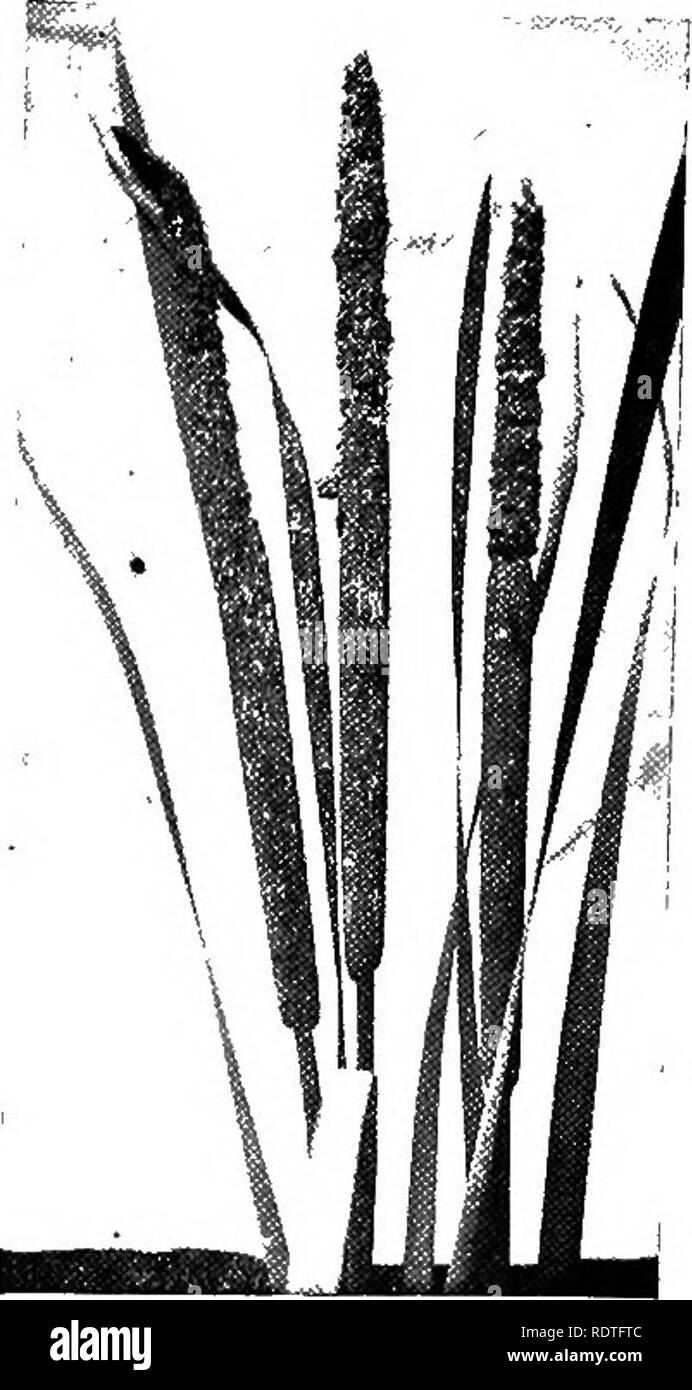. Botany, with agricultural applications. Botany. GRASS FAMILY 495 Some other well-known weeds of the family are the Cockle- burs, Ragweeds, Ironweeds, Spanish Needles, Wild Lettuce and Beggar-ticks. ' Monocotyledons Among Monocotyledons about 25,000 species are recognized which are distributed among 42 famiUes. They are less than one-fourth as numerous as the Dicotyledons. As previously stated. Monocotyledons differ from Dicotyledons in having flowers with parts usually in threes or sixes, leaves with parallel veins except in rare cases, and vascular bundles with the scattered arrangement. Th

Image details
Contributor:
The Book Worm / Alamy Stock PhotoImage ID:
RDTFTCFile size:
7.1 MB (269.8 KB Compressed download)Releases:
Model - no | Property - noDo I need a release?Dimensions:
1154 x 2165 px | 19.5 x 36.7 cm | 7.7 x 14.4 inches | 150dpiMore information:
This image is a public domain image, which means either that copyright has expired in the image or the copyright holder has waived their copyright. Alamy charges you a fee for access to the high resolution copy of the image.
This image could have imperfections as it’s either historical or reportage.
. Botany, with agricultural applications. Botany. GRASS FAMILY 495 Some other well-known weeds of the family are the Cockle- burs, Ragweeds, Ironweeds, Spanish Needles, Wild Lettuce and Beggar-ticks. ' Monocotyledons Among Monocotyledons about 25, 000 species are recognized which are distributed among 42 famiUes. They are less than one-fourth as numerous as the Dicotyledons. As previously stated. Monocotyledons differ from Dicotyledons in having flowers with parts usually in threes or sixes, leaves with parallel veins except in rare cases, and vascular bundles with the scattered arrangement. The Monocotyledons contain a few families of economic im- portance and one family that surpasses all other groups of Angiosperms in number of valuable food plants. Cat-tail Family (Typhaceae).—This family is mentioned because it includes the simplest of the Monocotyledons. They grow in swamps and in the edges of ponds, lakes, and stagnant streams. They have large grass-like leaves and often get 5 or 6 feet high. Their flowers are borne in long fuzzy spikes resembling a cat's tail (Fig. 448). The flowers are monoecious with both calyx and corolla absent. (Fig. 449.) The pistil is com- posed of one carpel containing one locule and only one ovule. The staminate flowers are borne at the top and the pis- tillate flowers below on the spike. The pistil is supported by a stalk or stipe which develops hairs that become the brown down of the fruit. The stamens are attached directly to the axis of the spike and are intermixed with hairs. As to whether the simple flowers of the Cat-tails are primitive or are reduced forms of more complex flowers is not known. Grass Family (Gramineae). — The Grasses constitute one of the largest families of Angiosperms and are widely distributed. Fig. 448. —The com- mon Cat-tail {Thypha latifolia), showing the terminal spikes of flowers consisting of staminate flowers above and pistil- late flowers below (Xj).. Please note that these images are extracte